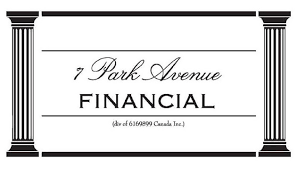|
Looking for Working Capital and Business Capital in Canada? Commercial Lending Isn’t What You Think
Maximizing Cash Flow: A Guide to Working Capital Business Financing
You Are Looking for Working Capital Financing!
Stay Ahead in Business with Smart Working Capital Strategies & Business Cash Flow Solutions
You've arrived at the right address! Welcome to 7 Park Avenue Financial
Financing & Cash flow are the biggest issues facing business today
Unaware / Dissatisfied with your financing options?
Call Now! - Direct Line - 416 319 5769 - Let's talk or arrange a meeting to discuss your needs
Email - sprokop@7parkavenuefinancial.com

Read on because Canadian business financing is challenging, but this article has the solutions you've been searching for
Business Lifeline: The Importance of Working Capital
Working Capital Business Financing: Exploring Your Options
Having a closed mind on achieving working capital and business capital financing via commercial lending just might not be the best thing.
Working capital is determined by taking the difference between a company's current assets and current liabilities, which are both documented on the company's balance sheet. Current assets encompass items such as cash, accounts receivable, and inventory, while current liabilities consist of accounts payable, taxes, wages, and outstanding interest payments.
Understanding Your Business Financing Needs
Let's focus in on working capital financing and talk specifically about the type of cash flow solution that might best suit your business - which you haven’t even considered!
The Challenge of Canadian Business Financing
No one disagrees with you that Canadian business financing solutions aren’t difficult to achieve, let alone envision. By itself, working capital financing is more unsecured from a finance firm or lender's position. So exactly how do you go about financing your business and determining what, in today’s challenging environment (post-2008-2009) as well as post-COVID-19 are the best solutions for business capital?
The Cash Cycle Dilemma - Understanding the Cash Conversion Cycle
When you think about it, it's really all about your cash cycle, how funds flow through your business and historically how your business has operated with this 'cash cycle' in mind. Every business, or rather industry, seems to have its own nuances.
The Role of Receivables
And if you are a service-focused business then the receivables you generated pose an even more of a required focus as we need to determine how you will use working capital financing to finance business operations.
That is not to say that service-type businesses can't be financed, it just becomes a question of securing financing that meets your specific needs - as the financial folks would say, your business is not capital or asset-intensive - yet you still require cash flow financing - as your sales grow, your receivables and operational needs grow also.
Available Solutions in Canadian Commercial Lending
So let’s get to the nub of our discussion, what are the solutions available for working capital in the current Canadian commercial lending environment?
If you are more of a service business (i.e. not capital intensive, for example = manufacturing) and can demonstrate ongoing recurring sales and receivables you are a prime candidate for a receivable financing facility.
Our favourite and in fact recommended is a Confidential invoice discounting/financing facility. This type of commercial lending facility is generally available through what we call non-banks - i.e. private independent finance companies.
It allows you to generate cash flow and working capital as you generate sales from the receivables which are a key part of current assets on the balance sheet, and you can then focus on meeting your obligations of staffing and operations prior to collecting from clients, while also meeting long term debt obligations.
You also do this on a confidential basis, i.e. there is no notification to your client basis, as is the case with more traditional receivable financing.
Asset-Based Lending for Asset-Intensive Firms
Firms that are more asset-intensive need to consider ABL facilities (asset based lending) that provide a combo of inventory, a/r and equipment financing that is margined (on a daily basis!) to give you all the cash flow and business capital you need. Canadian businesses know only too well that lengthy collection periods can become the death of their business and asset intensive businesses always need capital!
Overcoming Funding Gaps - Financing Working Capital Current Assets
Also in many cases the amount of receivable financing you need simply isn’t always available from Canadian chartered banks - we meet many clients who have some commercial lending from banks, but it never seems to be enough when you are in growth mode or experiencing some sort of other business challenge. This then forces the Canadian business owner and financial manager to assess options that you don’t necessarily have to consider, i.e. getting in additional equity and diluting your ownership or debt restructuring.
Key Takeaways
-
Understanding what working capital is and why it's crucial for business financial health via various business loan options. It's the additional working capital used for day-to-day operational expenses via turnover of short term assets.
-
Cash Flow: Recognizing the importance of managing cash flow effectively to ensure a business's liquidity and survival for what the company owes as well as business expansion funding needs
-
Receivables Financing: Learning about various invoice factoring and receivables financing options, like invoice discounting or factoring, which can help businesses access cash tied up in unpaid invoices.
-
Asset-Based Lending (ABL): Knowing the concept of asset-based lending, which involves using a company's assets, such as inventory and accounts receivable, as collateral to secure a loan.
-
Commercial Lending Options: Understanding the different types of commercial lending options available for a working capital loan , such as short term working capital loans,a merchant cash advance, lines of credit, and more, and how they can be tailored to a business's needs for funding day to day operations and short term debt
-
Cash Cycle: Grasping the idea of a cash cycle and how it affects a business's operations and financing needs and how much working capital the company needs
-
Financial Advisors: Realizing the importance of seeking guidance from experienced financial advisors who can help businesses choose the right financing solutions.
Working capital is a financial measure obtained by subtracting current liabilities from current assets.Positive working capital indicates that a company has the means to settle its obligations and has resources available for potential business expansion.Effective working capital management aims to ensure that a company can cover its everyday operational costs while optimizing the utilization of its financial assets for maximum efficiency.
Conclusion
In summary, yes we agree that it's complicated - term loans, asset based loans, invoice discounting facilities, unsecured cash flow financing... A lot of considerations. And which one is truly best for your firm? As we've said, it might not be as complicated as you think.
Speak to 7 Park Avenue Financial, a trusted credible and experienced Canadian business financing advisor to understand the best solution and the cost and ramifications of commercial lending options that make sense for your firm and the financial health of a business via small business funding and liquidity options
FAQ
What is working capital financing, and why is it important for my business?
Working capital financing refers to funds used to cover a business's day-to-day operational expenses. A positive net working capital position is vital because it ensures your business has the liquidity needed to operate smoothly, pay accounts payable obligations, and seize growth opportunities while avoiding a negative working capital position. Working capital is calculated around the formula called the ' current ratio ' calculation and is a measure of liquid assets/current assets and current liabilities on the balance sheet. The working capital ratio is often used by commercial lenders to approve business credit.
How does working capital financing improve cash flow?
Working capital financing, like receivables financing, can provide immediate cash by leveraging assets like unpaid invoices. This improves cash flow and the company's working capital allows you to meet financial obligations around short term liabilities promptly while achieving positive working capital
What are the benefits of confidential invoice discounting in working capital financing?
Confidential invoice discounting lets you access cash without notifying your clients, maintaining your business relationships. It aids in managing cash flow and working capital effectively.
Can asset-based lending (ABL) benefit asset-intensive businesses?
Absolutely. ABL allows asset-intensive businesses to use their assets (inventory, equipment, receivables) as collateral for loans. Financing a company's current assets via a business credit line helps secure cash flow and meet operational needs.
How can a Canadian Business Financing advisor assist in choosing the right working capital solution?
A business finance advisor can analyze your business needs and recommend tailored working capital management finance solutions. They provide expertise in navigating the complexities of commercial lending, ensuring you make informed decisions.
Can working capital financing help a startup business?
While it's possible, startups often face challenges in securing traditional working capital financing. Exploring alternative financing options may be necessary to understand the working capital formula in attaining a positive working capital ratio and generating enough cash to run the business.
What's the difference between working capital financing and traditional business term loans?
Working capital financing is specifically designed to address short-term operational needs, while traditional business loans may have broader use but require collateral and have fixed terms.
Do I need a strong credit history for working capital financing?
Credit history can influence financing options for many businesses. Some working capital solutions focus less on credit and more on the strength of assets on the company's balance sheet and revenue.
Is working capital financing suitable for seasonal businesses?
Yes, working capital financing can be especially beneficial for seasonal businesses to address short-term financial health, helping them manage cash flow fluctuations during off-seasons. Current liabilities include accounts payable.
What are the advantages of working capital?
Working capital serves as a valuable tool for smoothing out revenue fluctuations that many businesses encounter, particularly those with seasonal sales patterns. For instance, businesses may experience higher sales in certain months and lower sales in others. With sufficient working capital, a company can proactively purchase additional inventory from suppliers to prepare for peak seasons while fulfilling its financial responsibilities during periods of reduced income.
Consider the case of a manufacturer that generates a substantial 50% of its annual revenue in November and December. Despite this seasonal spike, the retailer still incurs ongoing expenses such as rent and payroll throughout the year. Through a careful assessment of its working capital requirements and maintaining a sufficient reserve, the retailer can ensure it has the necessary financial resources to stock up on inventory before the holiday season, hire temporary staff to handle increased demand and plan for sustainable employment of permanent staff members.
What is working capital management?
Working capital management is a financial strategy aimed at optimizing the utilization of working capital to cover day-to-day operational expenses while ensuring effective allocation of resources for productive purposes. This approach enables a business to finance its operational costs and fulfill short-term debt obligations.
Several commonly used financial ratios play a pivotal role in working capital management, providing insights into a company's working capital and related aspects:
-
The working capital ratio, also known as the current ratio, assesses the company's ability to meet short-term financial obligations. It is calculated by dividing current assets by current liabilities.
- A working capital ratio less than one indicates insufficient cash flow to cover upcoming debts.
- Ratios falling between 1.2 and 2.0 signify effective asset utilization.
- Ratios exceeding 2.0 may suggest an excessive retention of short-term assets rather than reinvesting for revenue generation.
-
The average collection period evaluates how efficiently a company manages accounts receivable, which directly influences its working capital. This ratio measures the average time taken to receive payment for credit sales and is calculated by dividing the average total accounts receivable by the total net credit sales, then multiplying by the number of days in the period.
-
The inventory turnover ratio gauges how efficiently a company handles its inventory to meet demand while avoiding excessive cash tied up in unsold inventory. It signifies how many times inventory is sold and replenished within a specific period, calculated as the cost of goods sold (COGS) divided by the average inventory value during that period. A higher ratio reflects more frequent inventory turnover.
In summary, working capital management involves strategically managing working capital to ensure liquidity for daily operations and prudent investment decisions. Financial ratios such as the working capital ratio, average collection period, and inventory turnover ratio serve as valuable tools in this process, helping companies optimize their financial health and resource allocation
How Can A Company Increase Working Capital?
A business may find it necessary to bolster its working capital in situations such as covering project-related costs or navigating a temporary decline in sales. Strategies to bridge this financial gap involve either augmenting current assets or trimming current liabilities.
Here are some available options:
-
Acquiring long-term debt: This approach boosts current assets by injecting additional cash into the company's reserves without significantly inflating current liabilities.
-
Refinancing short-term debt into long-term debt: By converting short-term obligations into longer-term commitments, a business can reduce its current liabilities, as these debts no longer come due within a year.
-
Liquidating less liquid assets for cash: This action increases current assets by converting illiquid assets into readily available cash for short-term financing
-
Conducting a comprehensive expense analysis: Identifying and curtailing unnecessary expenses can lead to a reduction in current liabilities, effectively bolstering working capital.
-
Assessing and optimizing inventory management: Streamlining inventory practices helps prevent overstocking and minimizes the risk of inventory write-offs, which can have a positive impact on working capital.
-
Implementing automation for accounts receivable and payment monitoring: Automating these processes can enhance cash flow, reducing the reliance on working capital for day-to-day operations.
In summary, businesses can employ various strategies to reinforce their working capital when faced with the need to cover expenses or cope with short-term sales fluctuations. These tactics involve either increasing current assets or reducing current liabilities to maintain financial stability.
Click here for the business finance track record of 7 Park Avenue Financial

' Canadian Business Financing With The Intelligent Use Of Experience '
STAN PROKOP
7 Park Avenue Financial/Copyright/2025

ABOUT THE AUTHOR: Stan Prokop is the founder of 7 Park Avenue Financial and a recognized expert on Canadian Business Financing. Since 2004 Stan has helped hundreds of small, medium and large organizations achieve the financing they need to survive and grow. He has decades of credit and lending experience working for firms such as Hewlett Packard / Cable & Wireless / Ashland Oil
|